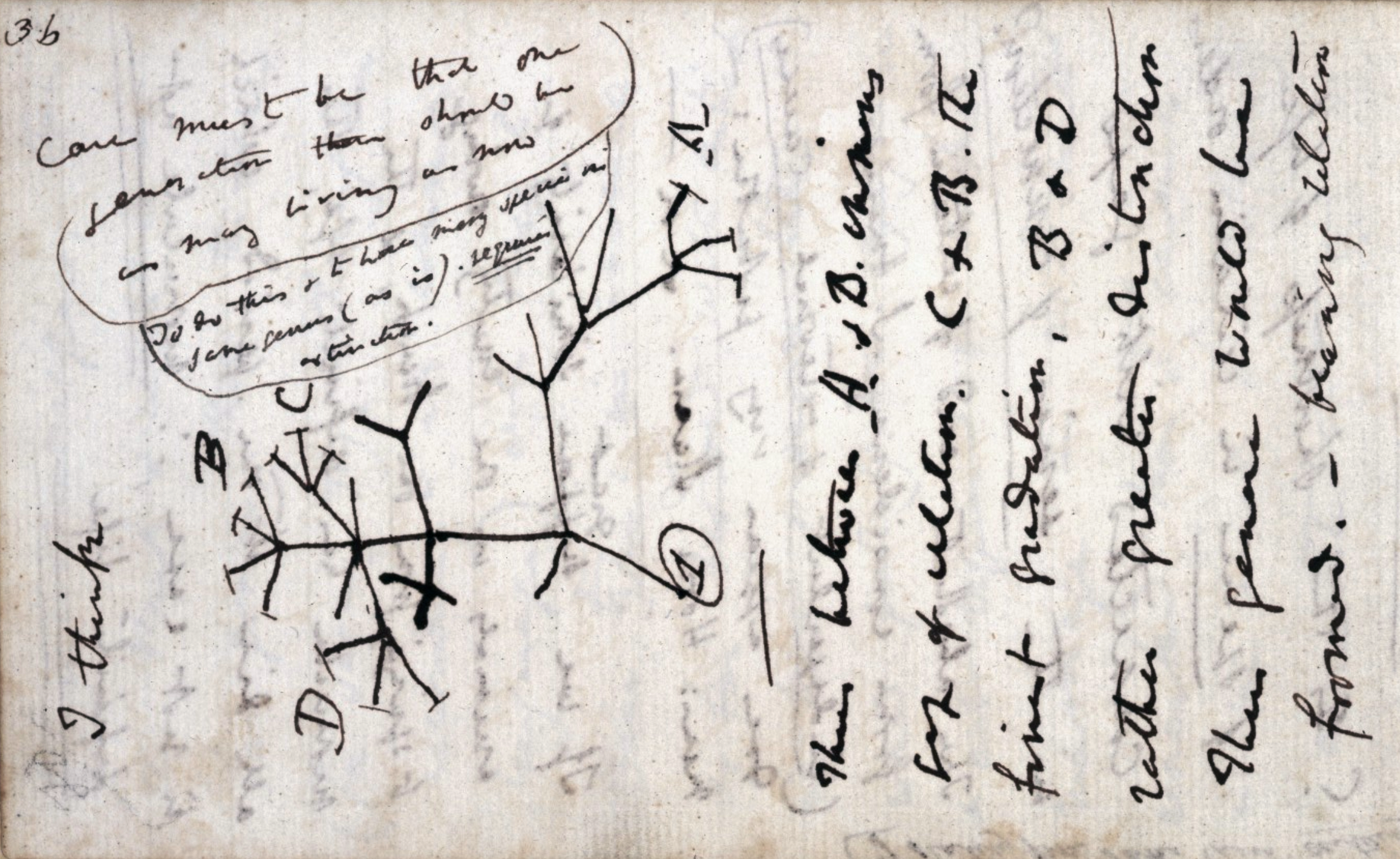Ancestors
In 2015, US President Barak Obama visited Ethiopia’s National Museum in Addis Ababa to see “Lucy,” one of the most famous fossils in the human family. During the visit, paleoanthropologist Zeray Alemseged jokingly told Obama that “every single person, even Donald Trump,” is connected. It was no joke.
In 1831, much to his father’s discontent, Charles Darwin quitted his career as an Anglican parson (previously also quitted medicine). Why? To enroll on a trip around the world on board the HMS Beagle. His assignment was to document the diversity of life that they would encounter. When Darwin departed, he lived in a world where living plant and animal species were considered static entities through time. Each individual only represented an imperfect variation around an immutable ideal, which was the fruit of creation.
In 1836, Darwin returned to England. His travels had changed the way we saw the world. Darwin had started to foresee causes leading species to change over time, evolving into other species. There were previous theories of organic evolution (e.g., Lamarck). However, there was no consensus on the mechanism explaining biological evolution. During the Beagle’s trip and subsequent experiments, Darwin conceived a primary mechanism driving evolution: Natural Selection. It works, more or less, like this:
Differences in genetic composition (the “genotype”) among individuals of a population can sometimes translate into different physical or behavioral attributes (the “phenotype”). In turn, specific phenotypes can concede a “selective” advantage to this particular individual leading to more reproductive success (i.e., “fitness”). Over time, these “novelties” can become the new normal, causing this population to “adapt” to the new environment. A classic textbook example of natural selection in action is the long neck in giraffes: The ancestors of giraffes didn’t exhibit their living counterparts’ long necks. However, some individuals of this ancestral population displayed slightly longer necks than others. Imagine an environment in which several species compete to access the low-lying shrubs. Darwin argued the giraffes with longer necks would outcompete giraffes with short necks (and other species). These giraffes would have better lives and reproduce more, passing their “long-neck genes” along to their babies (of course, this is an oversimplification; e.g., see pleiotropy). After several generations, all the surviving giraffes would have longer necks. Darwin contrasted the idea with “artificial selection,” in which specific traits are intentionally selected (e.g., the case of dog breeds). Over time, this process would produce the diversity of life forms living in the present—and the past—no Great Chain of Being necessary.
However, Darwin didn’t publish his extensive theory On the Origin of Species until 1859, more than two decades after returning. Darwin’s proposition was revolutionary and needed to compile enough evidence. Furthermore, Darwin was developing other long and rigorous studies in parallel (e.g., the monograph on the Cirripedia). Perhaps he was trying to build a reputation as a consolidated naturalist to make a stronger case before making it public. None of the above saved him from public humiliation. In the end, Darwin only decided to move forward after almost being scooped by a younger colleague, Alfred Wallace (with whom he published a paper in 1858). But they didn’t use terms such as genotype or phenotype. The molecular basis of inheritance was not discovered during Darwin’s life. It was not until 1900 that Gregor Mendel’s “laws of inheritance” were rediscovered. The three original instigators of the subsequent modern synthesis never met.
It is worth noticing that the study of evolution is a historical science. The fossil record allows us to track some anatomical changes over time. However, multiple equally-sound hypotheses can often be advocated to explain what’s in front of our eyes today. Continuing with the giraffe example, the “necks-for-sex” hypothesis argues that long necks evolved due to selective pressures related to deadly fights among male giraffes to access the females. It is also likely that not all evolutionary change is the result of adaptation.
Irrespective of the causes leading to the evolution of species, an essential idea of Darwin’s work is that all life forms on Earth have descended from a common ancestor. We are all related. He presented this idea with the analogy of the “tree of life” (see cover image*). Today, Darwin’s tree idea is more accurately depicted as the “impenetrable thicket of life.” One implication is that all living forms on Earth are related.
Advanced genomics now allows us to easily sample our DNA at home and have a lab analyzing our 23 pairs of chromosomes and later send us a detailed report about our “ancestry.” The companies involved do not share details of how it is precisely done. However, the basic principle is as follows:
Small portions of the genome are compared to reference libraries sampling other humans with known ancestry. For example, suppose 25% of your unique genome sections are likely to be found among the Basque. In that case, the test will identify you as being 25% Basque. However, the algorithms used work under the assumption that the Basque individuals in their library can trace their own heritage to the Basque Country. Do you see some potential flaws in this approach? How far back can someone discover her own heritage? 200, 300, 500 years ago? And what are the implications?
A former student from an Italian American background once told me that she received a DNA ancestry report indicating that she was less Italian than Greek! She and her family were trying to make sense of this information, jokingly wondering if they should switch their love from pasta to gyros. It would make no sense. If the genetic libraries used by the DNA-testing companies are designed to find where the student’s ancestors lived 300 years ago, the location would probably be Italy. 400 years ago? Perhaps it was Greece. Maybe, 600 years ago, it was a different region around the Mediterranean. The geography of our ancestry is time-dependent.
There is a vast amount of fossil and genetic evidence indicating that 200,000 years ago, modern humans’ ancestors would be found likely in Africa. 7 million years ago, we might encounter our last ancestor with apes, also in Africa. 1,500 million years ago, we might find the ancestor that we share with the lettuce! (“Africa” didn’t exist yet).
Darwin’s hero’s journey brought us essential ideas about life’s evolution with huge implications. Where is all this going?
*Cover image (Cambridge Digital Library):
Darwin’s 1837 sketch show his first diagram of an evolutionary tree (unfortunately now missing). The interpretation of its handwriting:
“I think case must be that one generation should have as many living as now. To do this and to have as many species in same genus (as is) requires extinction. Thus between A + B the immense gap of relation. C + B the finest gradation. B+D rather greater distinction. Thus genera would be formed. Bearing relation” (next page begins) “to ancient types with several extinct forms”
Thanks to David Alba, Marc Furió, Ashley Hammond, Santiago Catalano, Nathan Thompson, and Laia Salles Diez for reading drafts of this.

